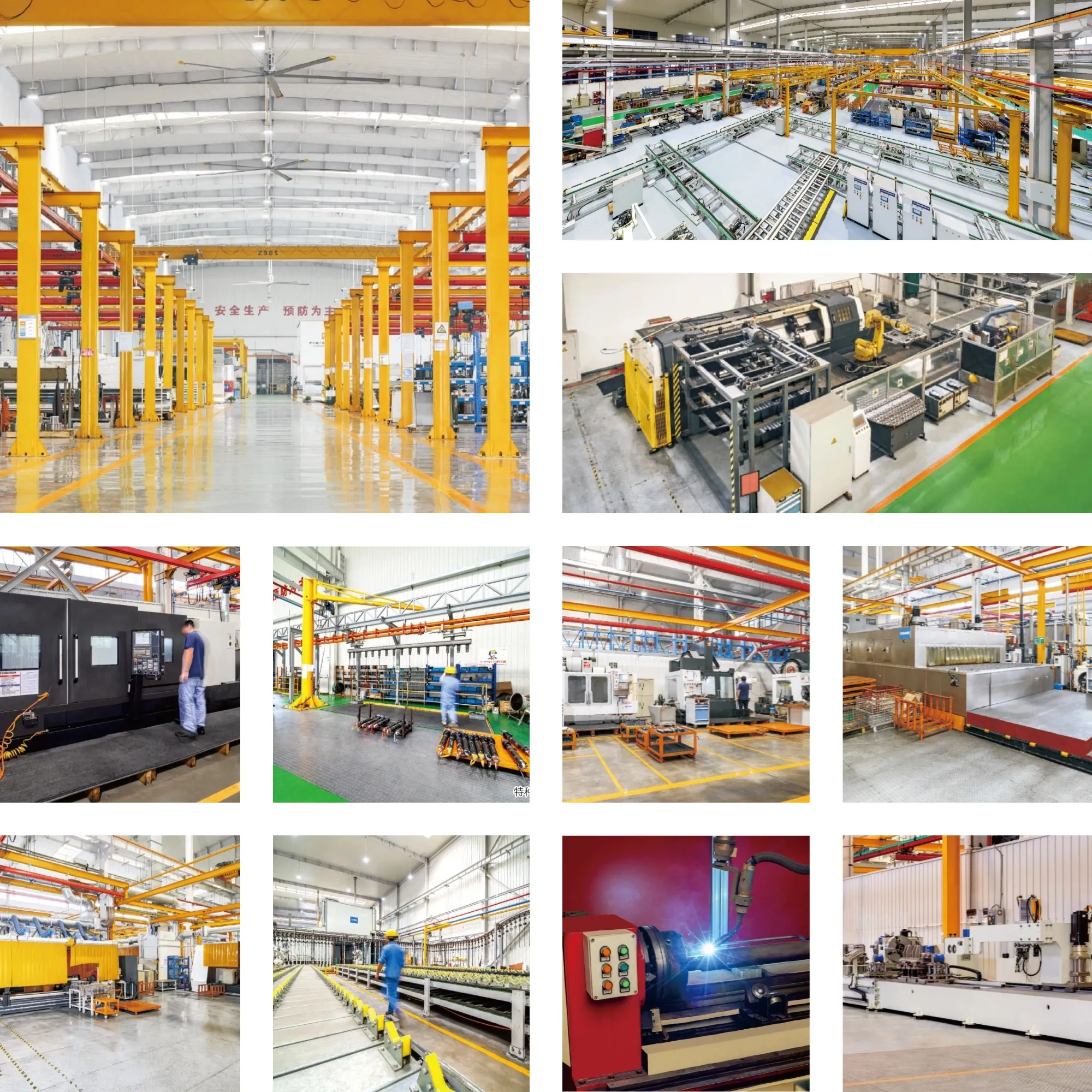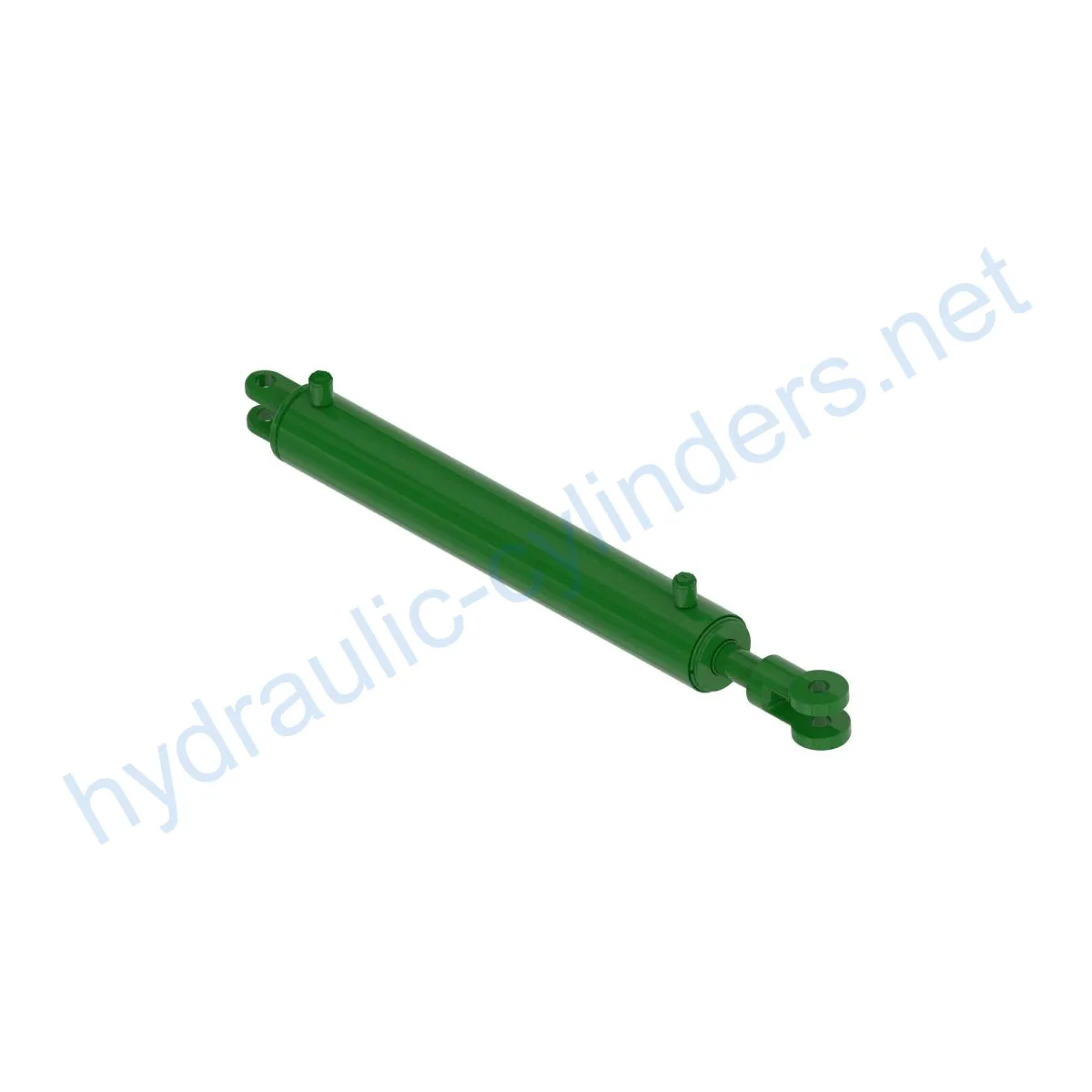Replacement Of AHC14513 Hydraulic Cylinder
Replacement Of AHC14513 Hydraulic Cylinder
Product Definition
The Replacement Of AHC14513 Hydraulic Cylinder is a hydraulic cylinder that is designed to replace the original hydraulic cylinder in John Deere 1770 and 1775 models. It weighs 55 lb and has dimensions of 4 in (height) x 5.25 in (width) x 38 in (length).
Product Specifications and Models
The hydraulic cylinder is designed to fit John Deere 1770 and 1775 models. Its weight is 55 lb and its dimensions are 4 in (height) x 5.25 in (width) x 38 in (length).
Product Features
- Improved Equipment Performance: Replacing damaged or worn hydraulic cylinders can restore the equipment’s normal operating capability, ensuring its performance in various applications.
- Enhanced Safety: Regularly replacing hydraulic cylinders can reduce safety hazards caused by cylinder failures, ensuring the safety of operators and equipment.
- Overload Protection: New cylinder designs usually consider better overload protection mechanisms, improving safety.
- Quick Installation: Modern hydraulic cylinders are designed with ease of installation and replacement in mind, reducing downtime.
- Standardized Components: Many hydraulic cylinders are standardized products, making it easy to obtain replacement parts in the market.
We are capable of producing this product, and our hydraulic cylinders can perfectly replace those from other brands.
Product Applications
The Replacement Of AHC14513 Hydraulic Cylinder has various applications, including:
- Excavator: Hydraulic cylinders in excavator booms or buckets may be damaged due to long-term use or overload and need replacement to restore normal operation.
- Crane: The hydraulic cylinders in crane boom lifts and lowers frequently, which can cause wear and tear, requiring regular replacement to ensure safety.
- Tractor: The hydraulic cylinder of the front loader on a tractor may leak or perform poorly due to continuous lifting and tilting operations, requiring replacement.
- Harvester: The hydraulic system of a harvester is subjected to high pressure during the harvesting process, and the cylinder may be damaged due to fatigue, requiring timely replacement to maintain work efficiency.
- Automated Production Line: Hydraulic cylinders are used to control robotic arms and other automation equipment. If the cylinder fails, it can affect production efficiency and requires immediate replacement.
- Die Casting Machine: Hydraulic cylinders in die casting machines may experience performance degradation under high pressure and temperature, requiring regular replacement to ensure product quality.
- Mining Equipment: Hydraulic cylinders are used for lifting and moving heavy objects in mining equipment. Due to harsh working environments, regular inspection and replacement are necessary to avoid equipment failure.
- Bulldozer: The wear and tear of hydraulic cylinders on the bulldozer’s push arm can lead to reduced pushing capacity, requiring timely replacement to maintain operational efficiency.
Maintenance and Repair
Regular maintenance is essential to ensure the Replacement Of AHC14513 Hydraulic Cylinder’s longevity and safe operation. The following are common maintenance tasks:
- Regular Inspection: Regularly inspect the hydraulic cylinder for leaks, cracks, and other signs of wear and tear to identify any potential issues early.
- Proper Lubrication: Appropriate lubrication is essential to the hydraulic cylinder’s longevity. Use the appropriate type of lubricant and apply it at the recommended intervals.
- Seal Replacement and Calibration Check: Seals wear over time, leading to leaks and reduced performance. Replacing seals and checking the calibration periodically can prevent these issues.
During installation, it is essential to provide proper guidance on aligning the cylinder. Properly aligning the cylinder can avoid misalignment issues. Using appropriate installation brackets is also recommended to ensure proper fixation of the cylinder.
Safety Considerations and Environmental Factors
When using hydraulic cylinders, safety must be a top priority. Following safety precautions when using hydraulic cylinders can prevent accidents and injuries. Additionally, the hydraulic cylinder must be disposed of properly to avoid environmental damage. We recommend disposing of the cylinder at authorized recycling facilities.
Troubleshooting and Common Problems
Common problems with hydraulic cylinders include leaks, excessive noise, and insufficient power. If you encounter any of these issues, you can follow the following tips to diagnose and fix the problem:
- Leaking Cylinder: Check the seal and replace if necessary. If the cylinder is severely damaged, replacement may be necessary.
- Noisy Cylinder: Check for low fluid levels or air in the hydraulic system. Bleed the system if necessary.
- Insufficient Power: Check for blockages in the hydraulic system or low fluid levels. Inspect the cylinder for signs of wear and tear that may cause reduced performance.
Preventive measures can minimize potential problems. Regular inspection and maintenance can help identify and solve problems before they become more serious.

Design Considerations and Selection Criteria
The hydraulic cylinder must be able to withstand the intended load and perform its function while meeting the required safety standards. The following design considerations and selection criteria should be taken into account:
- Load Capacity: The hydraulic cylinder must be able to handle the intended load without deflection or failure.
- Sealing: The hydraulic cylinder must have reliable sealing to prevent leaks.
- Durability: The hydraulic cylinder must be made of durable materials that can withstand wear and tear.
- Safety: The hydraulic cylinder must meet safety standards to prevent accidents and injuries.
- Maintainability: The hydraulic cylinder must be designed for ease of maintenance and repair.
Proper sealing and lubrication are essential to the hydraulic cylinder’s longevity. Using appropriate seals made of wear-resistant materials and regularly adding the recommended amount of hydraulic oil for lubrication can improve the cylinder’s performance and extend its life.
Installation Guide
Proper installation is crucial for the hydraulic cylinder’s long-term performance. The following are correct installation procedures:
- Ensure proper alignment of the cylinder during installation.
- Use appropriate installation brackets to fix the cylinder in place.
- Check for any leaks and fix them before operating the hydraulic system.
About Our Company
We are a manufacturer of replacement hydraulic cylinders with a wide range of products. We have become one of the leading manufacturers and wholesale distributors of hydraulic cylinders in domestic and international markets.
We have expertise in producing high-quality hydraulic cylinders with international certifications. We also provide customized services tailored to our clients’ requirements. Our production equipment is state-of-the-art, and our after-sales service is top-notch.

Author: lyl
参观我们的 VR 工厂
通过以下方式参观我们的 VR 工厂
液压缸应用:


